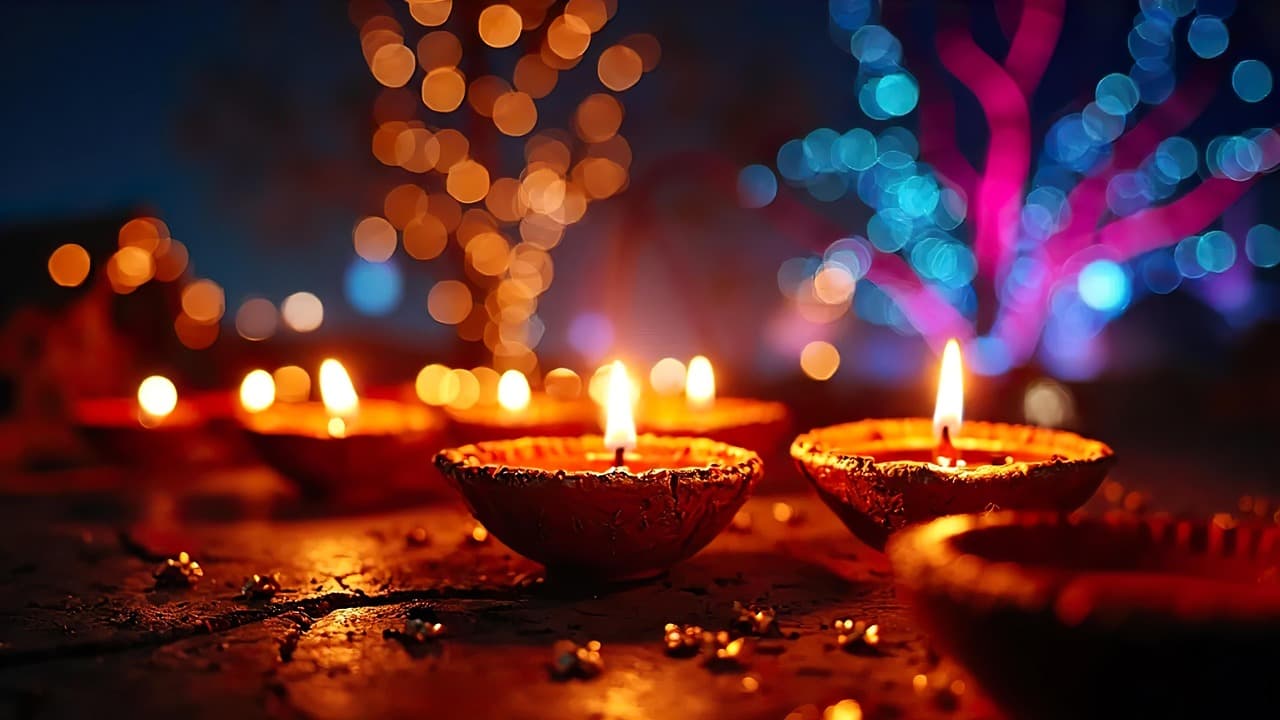Diwali, or Deepavali—“a row of lamps”—began on the banks of the Ayodhya Sarayu over 7,000 years ago when jubilant citizens lit clay diyas to welcome home their exiled prince, Lord Rama, after his 14-year forest odyssey and victory over the demon-king Ravana. That single night of homemade starlight symbolised the triumph of dharma over adharma, knowledge over ignorance, and became the prototype for every lamp-lit Diwali that followed.
Across millennia the festival absorbed new legends—Krishna defeating Narakasura, Lakshmi emerging from the cosmic ocean, the Jain Tirthankara Mahavira attaining moksha—yet the ritual heartbeat stayed the same: cleanse, decorate, illuminate, celebrate. Today, weeks before the new moon, homes are scrubbed, doorways painted with rangoli rice-powder mandalas, and balconies strung like constellation maps. On the main night, families dress in new silks, exchange gold coins, burst fireworks that sketch temporary galaxies, and place flickering diyas on every sill so that Lakshmi, goddess of prosperity, can find her way to the brightest address. It is India’s original open-source festival—Hindu, Sikh, Jain, Buddhist—rewritten in sweets, sparks and shared hope every single year.
Here are 7 Diwali Trivias that we bet you never heard of :
Space-Age Sparkle: In 2019, astronauts aboard the ISS snapped India glowing like a constellation during Diwali night. The brightest patch wasn’t Delhi or Mumbai—it was the string of oil-lamp villages along the Indo-Gangetic plain, proving diyas still outshine LEDs.
Gold Temple, Golden Gift: Every Diwali, the 1.5-ton golden throne at Amritsar’s Harmandir Sahib is polished so perfectly that it reflects the moon—literally. The temple’s 24-carat surface increases by 3–4 grams each year because devotees secretly press gold foil onto it as thanksgiving.
The 14-Year Sweet: Rajasthan’s Chandi Ka Laddoo (silver-leafed sweet) is prepared once every 14 years—only on the Diwali that aligns with the rare Maha-Lakshmi yoga. The last batch, auctioned in 2021, sold for ₹1.8 lakh per kilo; the next round won’t arrive until 2035.
Eco-Warrior Festival: The small town of Thulasendrapuram in Tamil Nadu celebrates “Seed-Diwali.” Instead of firecrackers, children fling clay balls stuffed with native tree seeds. Monsoon does the planting, and satellite data show a 12 % greening spike around the village every January.
Diwali on Ice: In 2018, a team of Indian scientists at Bharati station in Antarctica marked the festival by lighting 50 solar-powered diyas in –40 °C winds. The lamps stayed aglow for 18 hours, setting a world record for the coldest continuous flame maintained without fuel.
Cricket’s Diwali Cap: The only Test match to start on Diwali day was India vs West Indies, Delhi 2011. Virat Kohli, playing his second Test, scored an unbeaten 63 under floodlights lit especially for the occasion—his “Diwali debut” knock is still a trivia quiz favorite.
Reverse Diwali: In Varanasi’s weaver colony, the day after Diwali is celebrated as Ganga-Diwali. Locals set thousands of floating diyas upstream so the river itself carries the light back to the city, creating a golden reflection that photographers call “the liquid sunrise.”
Light up your celebrations with these nuggets and watch even the phuljhadi crackle with extra awe. Happy Diwali!
We hope you enjoyed this deep dive into the Diwali Trivia world! Which piece of trivia surprised you the most? Share your favorite Diwali fact with us in the comments, and be sure to explore Triviaah.com for more fascinating deep dives into the history behind your favorite holidays and traditions!
Happy Diwali from all of us at Team Triviaah!
